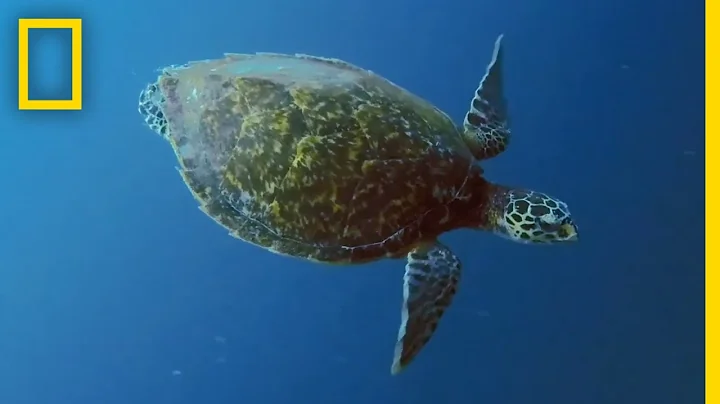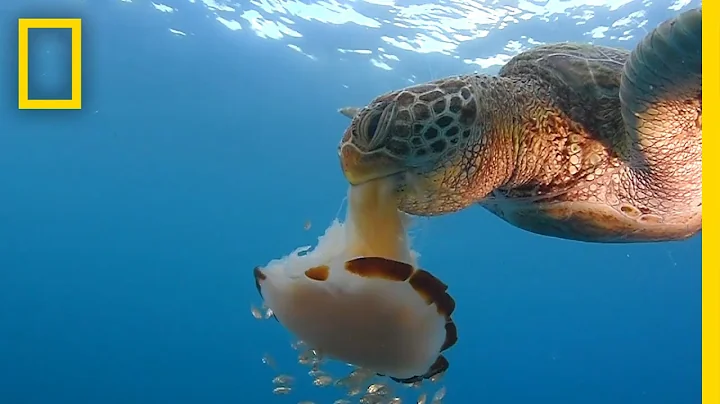Leatherback sea turtle Dermochelys coriacea

The leatherback sea turtle has a huge teardrop-shaped body, the most hydrodynamic of all sea turtles . Its back is divided by seven different longitudinal keels, and the carapace is oily and flexible. Covered in leathery skin, the entire turtle's dorsal surface is dark gray to black, scattered with white spots and spots. The reason for this is because their scales lack beta keratin, which is also unique among reptiles .

The leatherback sea turtle is the only extant species among the seven genera of the family Turtleidae . It is also the largest and heaviest reptile after crocodiles and the largest sea turtle species in the world. Because different populations live in different areas (Atlantic, Pacific, South China Sea, Indian Ocean), the extreme data of individuals will vary greatly. The average adult length can reach more than 2 meters and weigh more than 600 kilograms.

Leatherback sea turtles are one of the deepest diving marine animals . The diving depth is as high as 1280 meters, and the general diving time is between 3 and 8 minutes, with a maximum length of 30-70 minutes. It is estimated to account for only 0.1% of daily rest time. It relies on muscle heat generated by continuous high-frequency swimming to maintain a temperature difference with the ocean. The core body temperature of adult leatherback sea turtles has been found to be 18°C higher than the temperature of the water surface in which they swim.

Once the male enters the sea, he will never leave the sea. The female needs to return to land to build a nest, laying eggs 3-10 times in a breeding season, with a number of 60-90 eggs each time, but its eggs often Being eaten by humans or other animals will result in a lower rate of successful hatching. At the same time, human-induced changes in the coastal environment due to construction, dredging, beach reconstruction, etc. will also lead to a reduction in the area where sea turtles can nest. Animals that prey on them before they try to reach the ocean include ghost crabs, monitor lizards, raccoons, dogs, coyotes, meerkats, waterbirds, and some giant raptors. Another factor that affects the population is human lighting. After hatching, the hatchlings are affected by the lighting and confuse their direction, causing them to often go inland instead of out to sea.

Leatherback sea turtles are very vulnerable to predation by other animals in their juvenile stages, whether on land or in the sea. The tortoise shells of leatherback sea turtles are not pure bones. They are all softened into gelatin and are not as hard as ordinary turtles. Therefore, they cause the likes of tiger sharks, Carnivorous marine animals such as great white sharks and killer whales will feed on it. The estimated adult age of leatherback sea turtles in the wild is between 26 and 32 years, but in artificial captivity with controlled temperature and nutrition, the adult age can be shortened to 7 to 16 years. Once they reach adulthood they have few natural predators and their lifespan is estimated to be over 100 years.

It can eat 73% of its own body weight in food in one day. Its favorite food is jellyfish , which can effectively control the population of jellyfish.

But it cannot tell the difference between jellyfish and plastic bags, and often mistakes plastic bags and similar things floating in the sea for food, causing malabsorption and intestinal obstruction, leading to death.

The International Union for Conservation of Nature (ICUN) On June 21, 2013, the leatherback sea turtle was assessed as an endangered species in the Red List Vulnerable species Vulnerable (VU) . It is also a China national first-level protected animal. .
Click to watch the video link

There is a long way to go to maintain biological diversity and protect the environment!

If you like it, I hope you will give me the motivation to create!





















